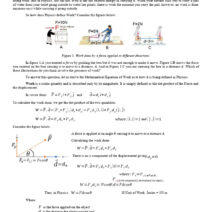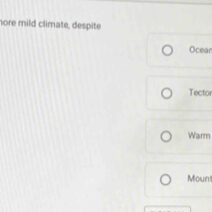As the years unfold, the sun continues to rise higher on a world that seems ever more fraught with heat. The planetary thermostat is spinning out of control, leading to an unprecedented increase in average global temperatures. The surge in heat across the climate can be likened to a pot of water slowly coming to a boil—unseen at first, but eventually transformative and perilous. This phenomenon is not merely an annual anomaly; rather, it reflects a profound shift steered by a confluence of anthropogenic activities and natural processes, shaping a new reality for humanity and the biosphere.
At the crux of this discourse is the phenomenon of greenhouse gas emissions, particularly carbon dioxide (CO2). The Earth functions like a greenhouse, trapping solar energy and thereby creating a hospitable environment. However, since the dawn of the Industrial Revolution, humanity has pushed excess carbon into the atmosphere through fossil fuel combustion, deforestation, and a myriad of industrial processes. We are essentially thickening the atmospheric blanket, causing it to retain more heat. This atmospheric alteration corresponds to climate scientists’ urgent predictions; indeed, the levels of CO2 in the atmosphere now exceed 400 parts per million, a threshold unseen for millions of years.
Another critical player in the drama of climate change is methane, a gas significantly more effective at trapping heat than CO2, albeit present in smaller quantities. Methane emissions arise not only from fossil fuel production but also from agricultural practices, particularly livestock farming. The rise of industrial agriculture introduces a cacophony of emissions, from the vast land is cleared for pasture to the intensive farming practices that exacerbate the release of this potent greenhouse gas.
As you step outside on a sweltering summer day, you may be struck by the sense that our warming planet is not only a matter of statistical data points, but also an experience deeply felt in the physical essence of nature. Extreme weather events serve as poignant reminders of this transformation. From scorching heatwaves to torrential rainfall, the climate system is becoming increasingly erratic. The science behind this can be traced back to the fundamental principles of atmospheric physics. Warmer air holds more moisture, fueling extreme precipitation events. Thus, while several regions may suffer from severe droughts, others are inundated by floods, revealing the perplexing paradox of climate change. Predictability crumbles under the weight of rising temperatures.
Ocean temperatures are rising in tandem with air temperatures, with profound implications for global ecosystems. The Earth’s oceans absorb vast amounts of the excess heat generated by greenhouse gas emissions. The consequence of this thermal absorption is the alteration of marine ecosystems, leading to phenomena like coral bleaching, as reef-building corals struggle to survive in warmer waters. Moreover, the warming of oceans also disrupts weather patterns, amplifying storms and hurricanes—a brutal reminder that the wrath of nature is incited by human actions.
But it is not merely physical science that unveils the layers of climate change. The biosphere itself offers a narrative of accountability, adaptation, and resilience. Species are struggling under the pressure of rising temperatures, migrating toward cooler habitats in search of solace. The delicate interplay of ecosystems represents a symbiotic connection to Earth’s climate. Unfortunately, for some species, this journey is futile, leading to extinction—a tragic chapter in the chronicle of biodiversity loss.
On a broader scale, the geopolitical landscape is irrevocably reshaped by the surplus heat trapped within our atmosphere. Countries are grappling with the phenomena of climate refugees displaced due to the irrevocable impacts of heat on agriculture and water supplies. As rising sea levels threaten low-lying coastal communities, nations are compelled to confront the ethical implications of climate justice. These are the realities that present themselves as the heat envelops the planet—a call to action for global solidarity and innovation.
The urgency of this planetary crisis calls for robust action and collaborative solutions. The adoption of renewable energy technologies presents a glimmer of hope amid the daunting challenges posed by climate change. Renewable resources—solar, wind, hydro, and geothermal—offer the potential to markedly reduce reliance on fossil fuels and thereby diminish the volume of greenhouse gases that contribute to atmospheric warming. Financial investments in green technologies not only serve environmental well-being but also catalyze economic growth, creating job opportunities that support communities striving for sustainability.
Furthermore, initiatives in afforestation and reforestation present coupling solutions, reinforcing the natural carbon sink mechanism. Forests act as crucial allies in the battle against climate change, sequestering substantial amounts of CO2 from the atmosphere and returning oxygen to our planet. Strategies that juxtapose conservation with development may play a pivotal role in crafting sustainable pathways for future generations.
In conclusion, the surge of heat in our climate journey bears witness to a complex nexus of factors intertwining human existence with the natural world. From the intricate science of greenhouse gases to the ramifications for ecosystems and human societies, the urgency is palpable. The footfalls of climate change resonate alarmingly, demanding an unyielding commitment to accountability, adaptation, and stewardship. The clarion call for action echoes louder than ever, urging humanity to confront the cacophony of climate consequences with compassion and resolve. The path ahead is undoubtedly fraught with challenges, yet it also harbors the potential for transformational change—an opportunity that can rekindle our connection with the Earth’s equilibrium. In this crucible of planetary evolution, choices made today will reverberate through generations, shaping the contours of our shared future.



